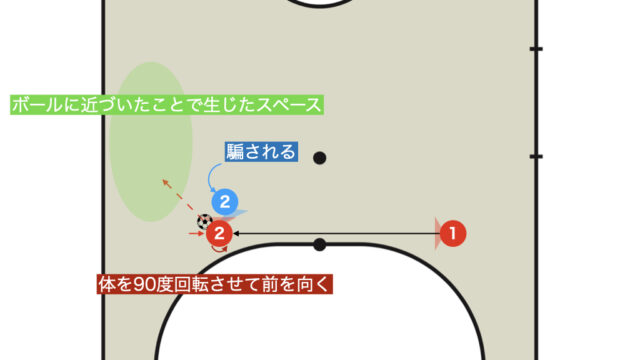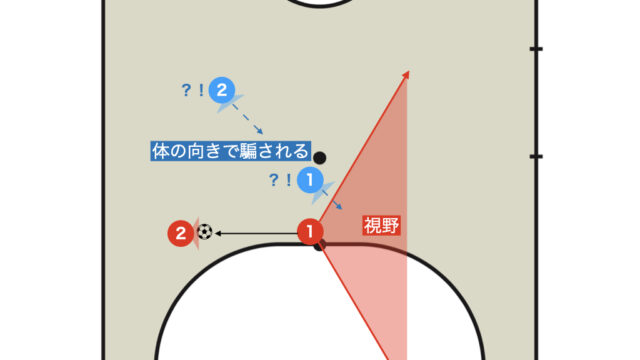What do you usually focus on when dribbling?
In reality, many people rely purely on their instinct without much thought.
Such dribblers tend to be inconsistent in their play and cannot deliver high performance on a regular basis.
You might be surprised, but there is a theory behind dribbling in futsal – or rather, in football.
To cut to the chase, the dribbling theory = the gap with your opponent (distance × angle) × technique.
So, what exactly does this distance × angle represent?
This article provides a comprehensive explanation of the dribbling theory that every FP should know, complete with diagrams and videos.
Gap with Your Opponent = Distance × Angle
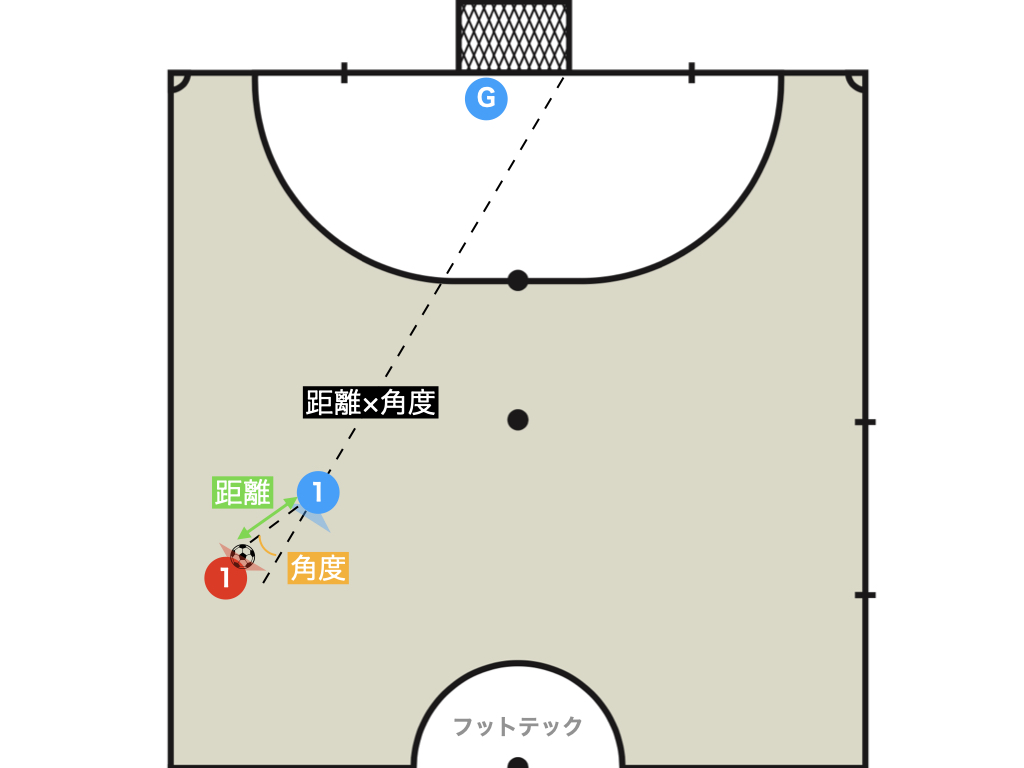
When you hear the word “gap,” you might think it’s simply the distance between people; however, considering that football (soccer, futsal, etc.) involves a goal, that notion is incorrect.
The gap is expressed not only by the distance between individuals but also by distance × angle, where the angle refers to the one formed by the interplay of the goal, defense, and offense.
In defense, since it is necessary to constantly cover the goal to stop shots and dribbles, it is crucial to always be aware of keeping this angle at 180 degrees.
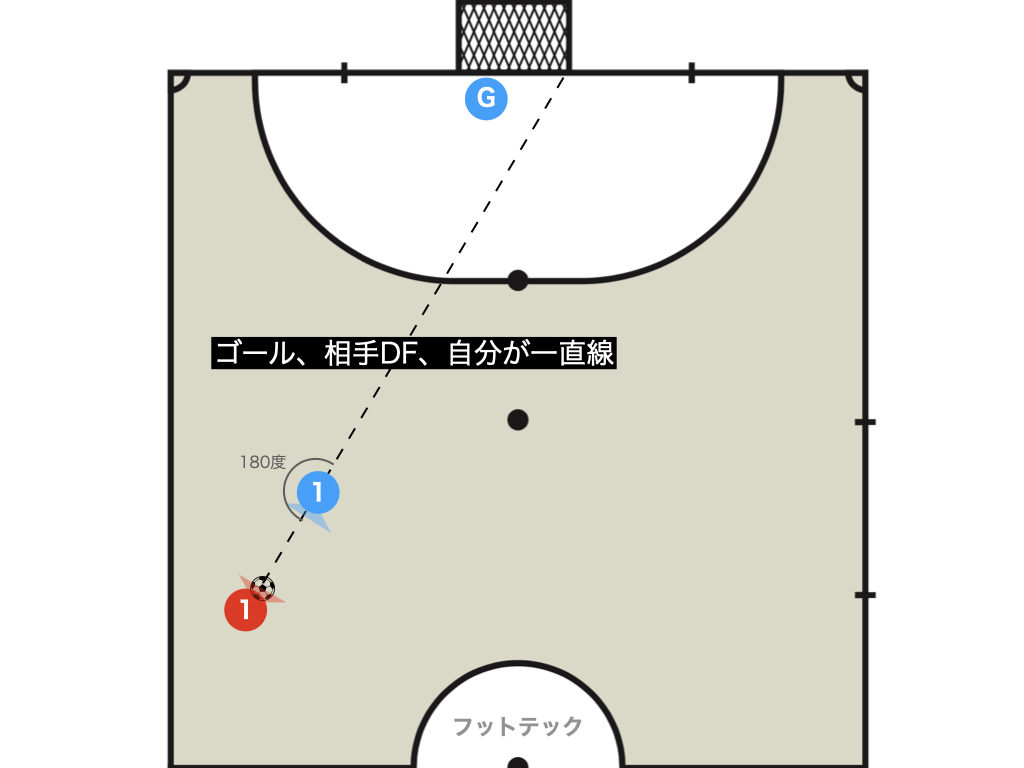
Furthermore, teams with a shared understanding – for instance, when FP cuts to the far side and the goleiro guards the near post – might safely consider the second post as the goal’s reference point.
Next, let’s delve a bit deeper into distance and angle.
- Distance: To avoid losing the ball
- Angle: To beat the defense
Distance: To Avoid Losing the Ball
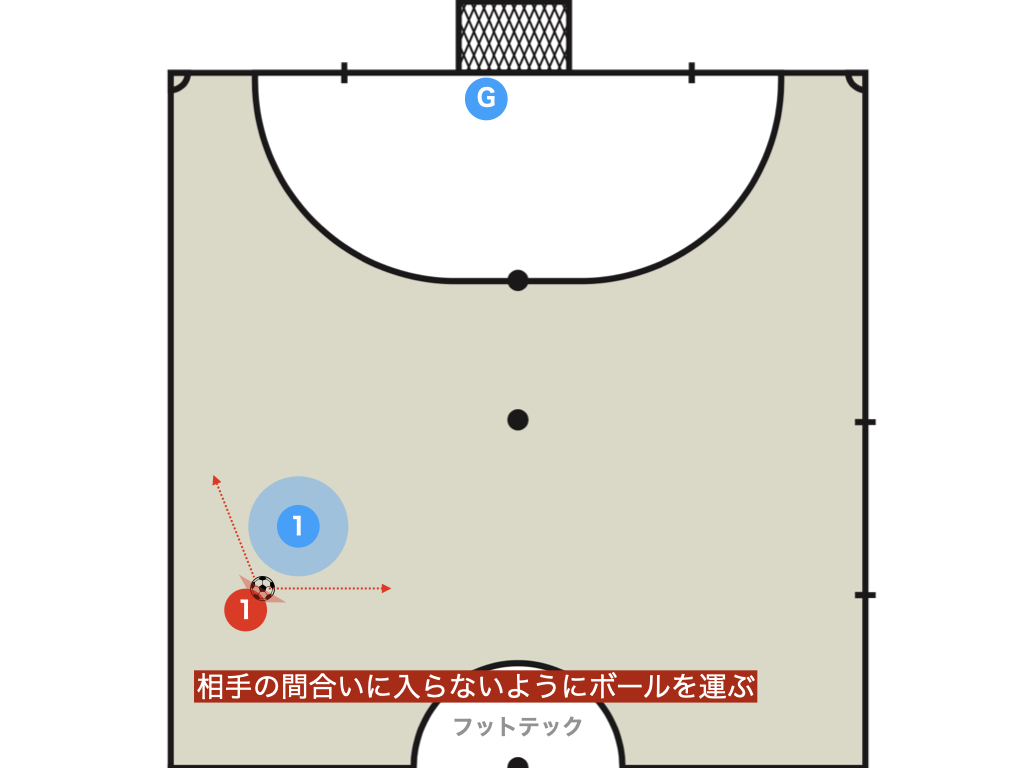
There are generally three situations in which you lose the ball.
- Mistakes on your part: Strengthen your mental game
- When the ball is touched: Keep a distance that even if the DF extends their leg fully, they cannot reach
- When your body is contacted: Keep a distance that even if the DF extends their leg fully, they cannot reach
Conversely, as long as none of these three occur, you won’t lose the ball.
If you maintain a distance that prevents opponents from reaching you and avoid careless mistakes, you should be able to keep the ball.
Angle: To Beat the Defense (the Angle That Can Win with Yoidoon)
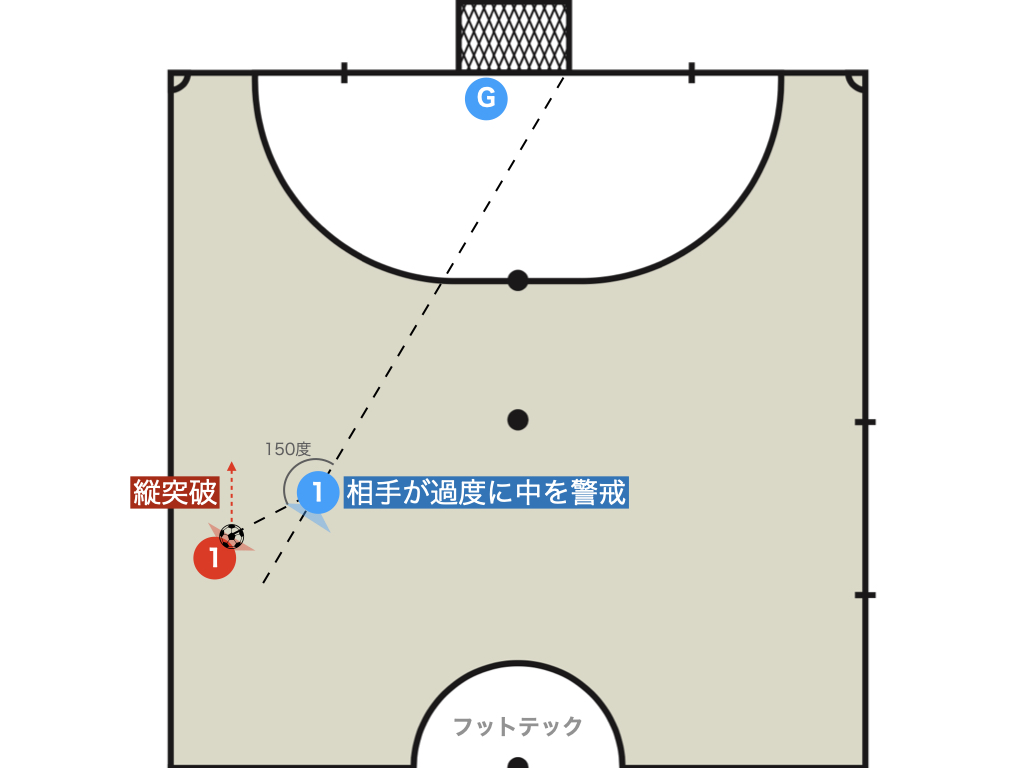
- 180 degrees: The goal, defense, and offense are in a straight line
- 165°~135°: An angle at which you can take on the challenge if you have the ability
- 90 degrees: A high possibility of breaking away with Yoidoon (when the DF is not set)
- 0 degrees: Completely free
By maintaining a distance where the opponent’s DF cannot reach and gradually changing your angle without being noticed, it is important to achieve an angle that allows you to break free completely.
This breakaway angle varies depending on the quality difference between you and your opponent, so it is essential to practice and have in mind an angle that allows you to break free to a certain degree.
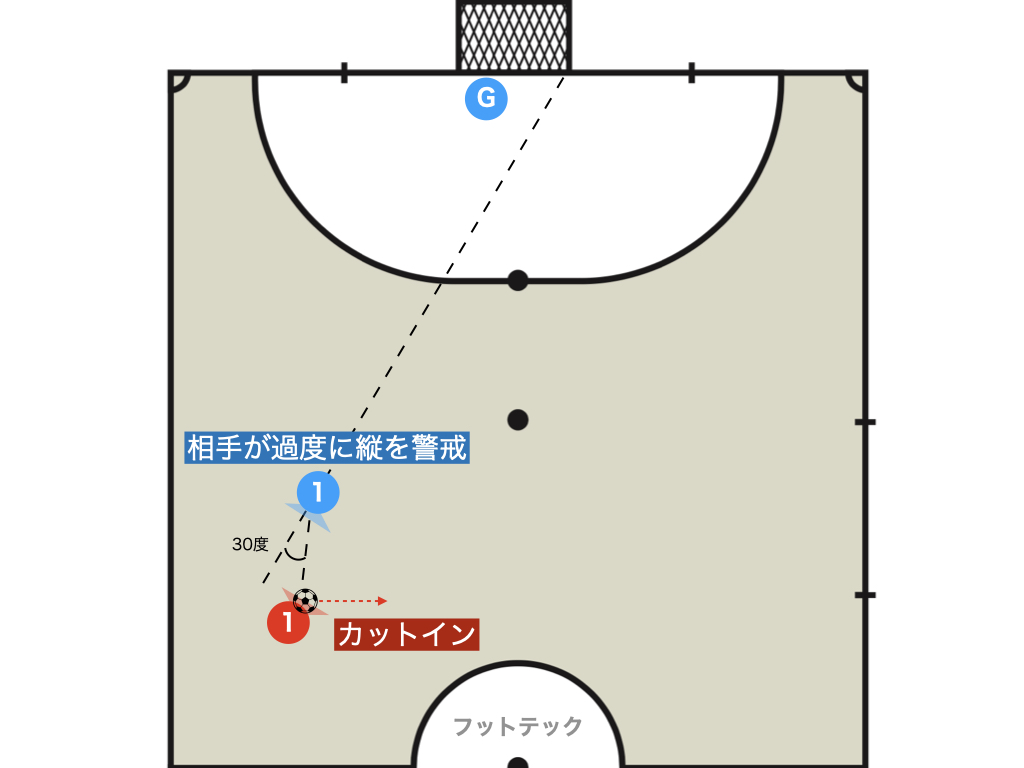
If your opponent is overly cautious about vertical play, opt for a cut-in to transition into a pass or shot.
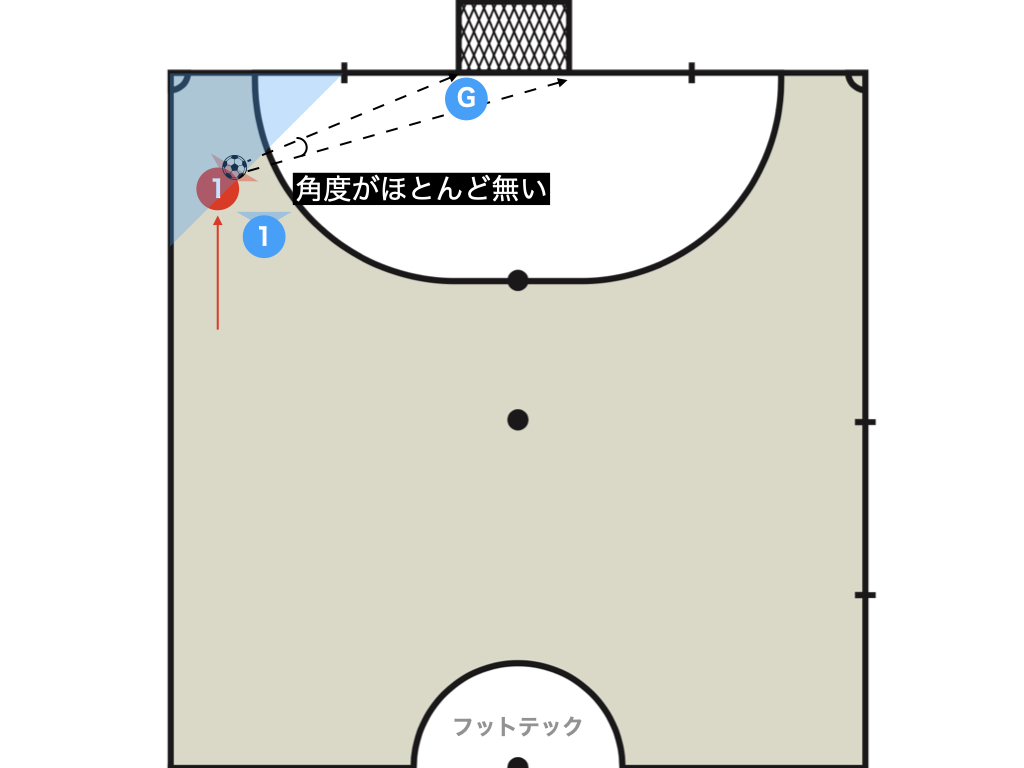
When you break vertically, the angle to the goal tends to vanish, so it is important to be cautious about entering the zone near the CK.
First, Aim for a Vertical Breakthrough
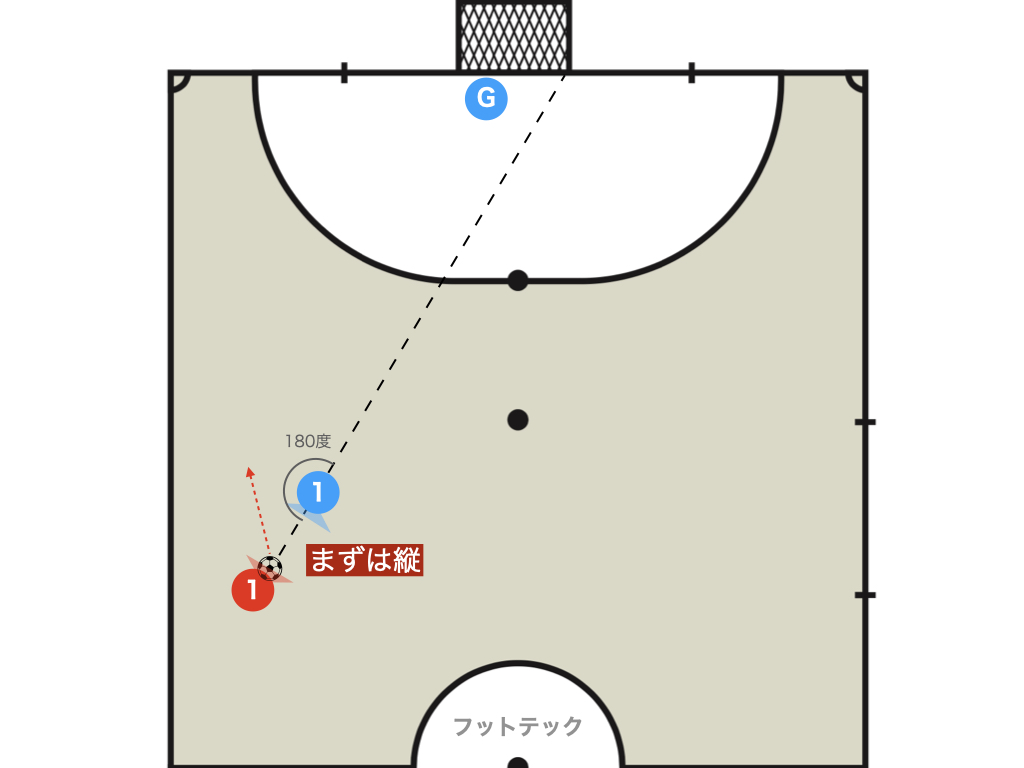
If you want to approach the opponent’s goal more quickly, you need to opt for a faster dribble.
Since dribbling involves running while kicking the ball, its speed can never exceed that of an all-out sprint.
Therefore, it is clear that a vertical dribble, which closely resembles the form of a sprint, is the fastest and most forward-moving dribble.
Showing Vertical Play Makes the Cut-In Effective
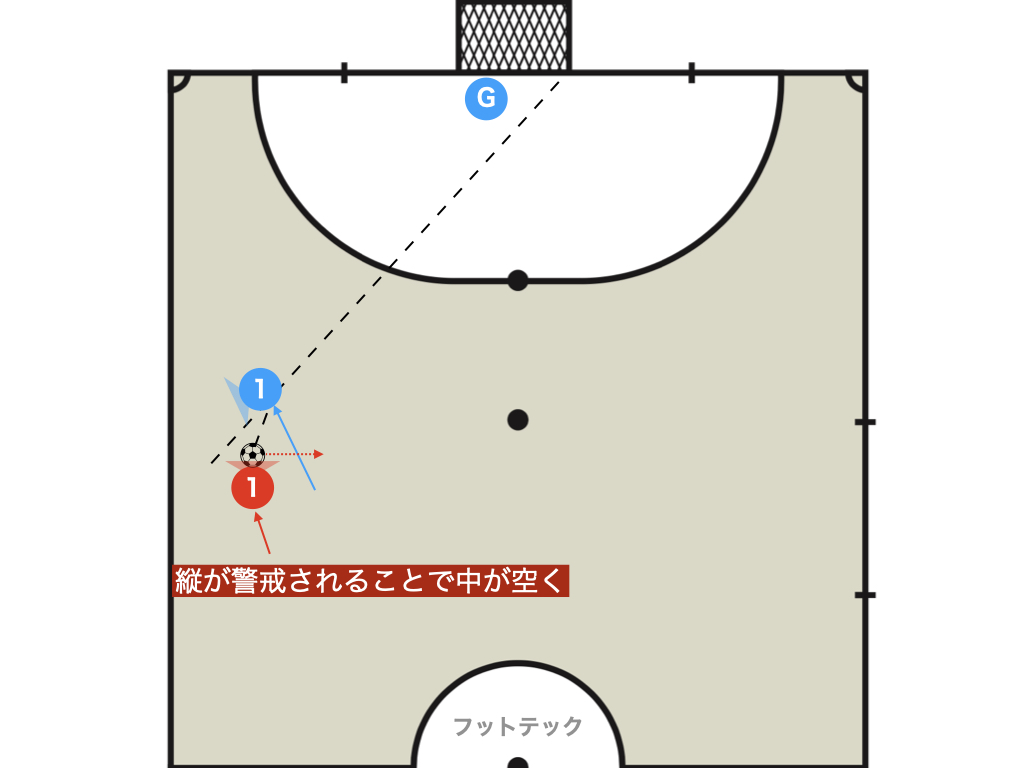
When you showcase your vertical prowess, the opposing DF becomes cautious about vertical play, causing their center of gravity to shift backward.
Thus, if you cancel your vertical run and execute a cut-in, you can catch your opponent off guard.
If performed from a high position, a cut-in can widen the angle to the goal, making a middle-range shot more likely than with a vertical breakthrough – an extremely effective tactic.
However, a cut-in that does not display vertical prowess becomes easier for the opposing DF to counter.
Therefore, when executing a cut-in, it is important to always consider it together with vertical play to unsettle your opponent’s balance.
How to Deal When the Opponent Is Close
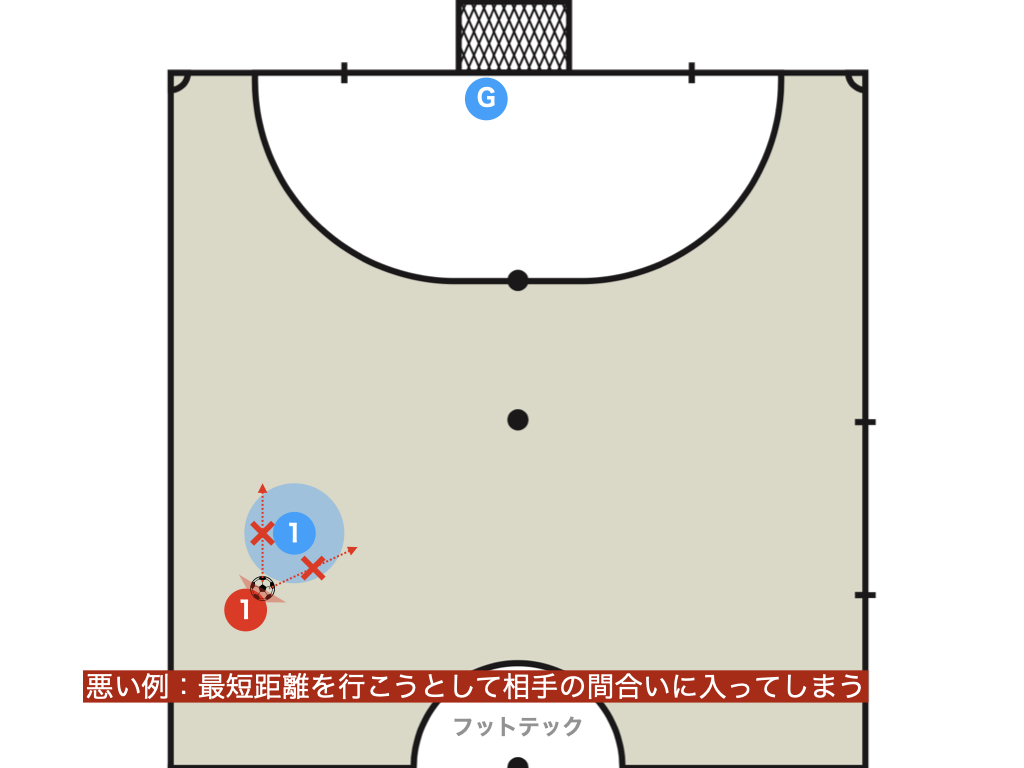
If you try to approach the goal via the shortest route while the opponent is close, the opposing DF can easily extend their leg to intercept.
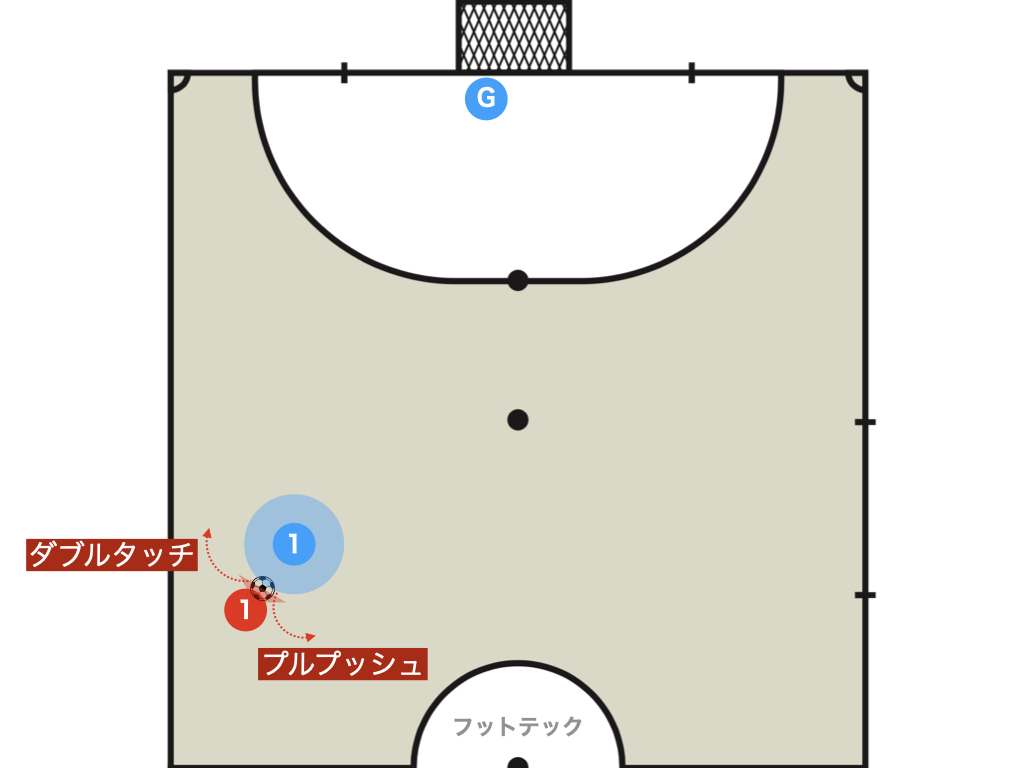
In such cases, it is effective to adopt an individual tactic that escapes the opponent’s defensive range.
For a vertical breakthrough, a double touch is very effective, and for a cut-in, a pull-push works extremely well.
Dribbling with the Game in Mind
Body Orientation: Creating a Triple Threat
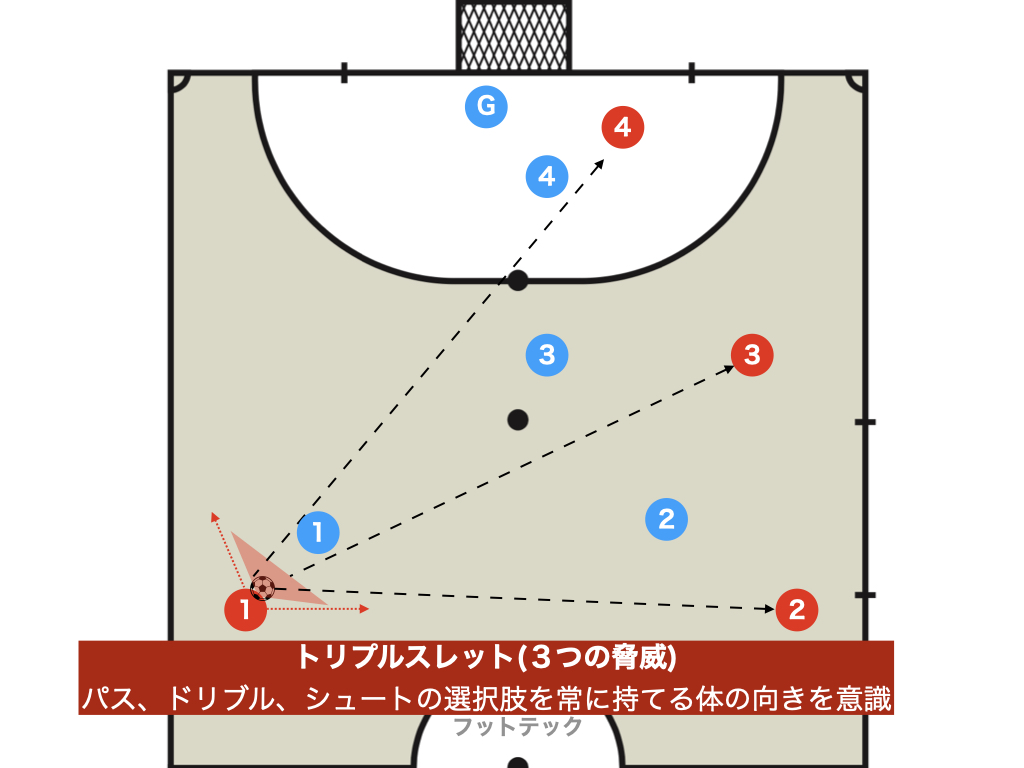
- Pass
- Dribble
- Shot
An orientation that always offers the options of pass, dribble, and shot.
Securing Vertical Space

When it comes to dribbling, it is extremely important to always have the option of vertical play.
When There Is No Vertical Space

If there isn’t vertical space, the rule of thumb is to forcefully execute a cut-in and bring the ball to the center.
In such cases, if you are close to your opponent, perform the cut-in with a slightly negative angle.
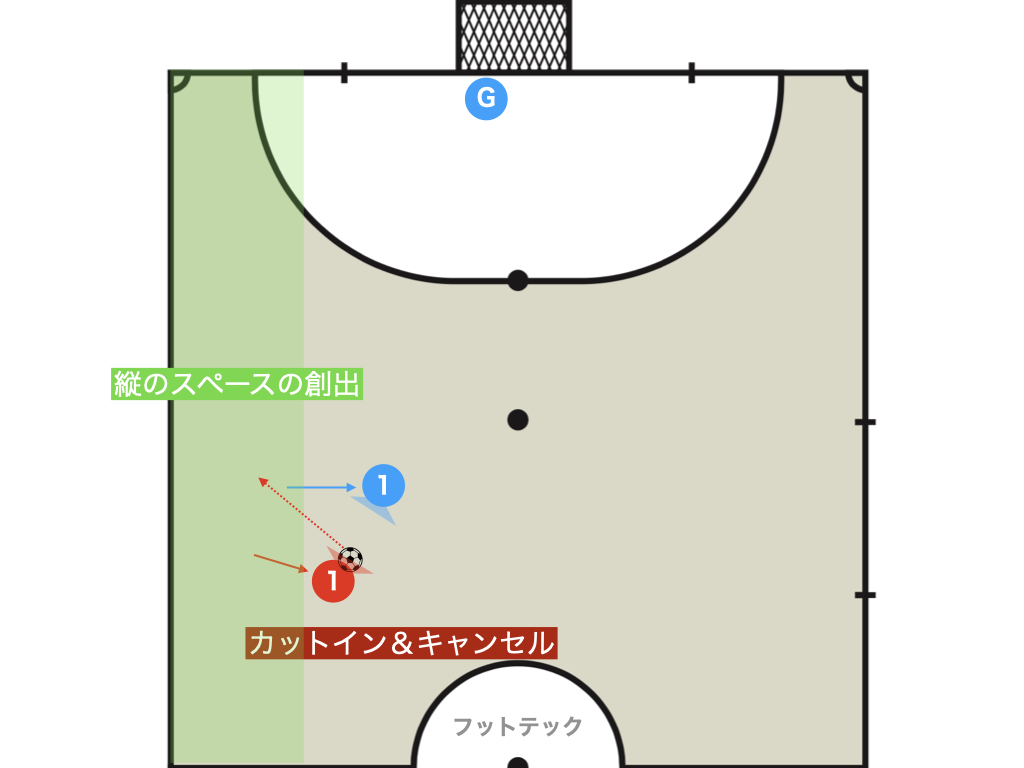
By executing a cut-in and shot cancel, you can lure the opposing DF.
Furthermore, by moving vertically after the cancel, you can make effective use of the space created by the cut-in.
Summary
What did you think?
This blog teaches you the logic behind dribbling, but a minimum level of technique to embody that logic is indispensable.
Conversely, once you grasp this logic, you can focus solely on practicing and honing your technique.
Please take a moment to review your own dribbling footage in light of this theory.
Thank you very much for reading this article to the end.
If you found this article useful, please consider sharing it using the social media share buttons above.
We regularly share valuable insights on futsal tactics on Twitter, so if you haven’t followed us yet, we’d appreciate your support!
We are committed to raising the level of futsal in Japan by sharing high-quality information through discussions with individuals who have coaching experience in the F.League and overseas.
If you have any questions or notice any mistakes, feel free to leave a comment below.
We update our articles regularly, so if you’d like to keep reading, please bookmark our site or search for “FutTech”!

